Tales of Scales
posted on
April 1, 2016
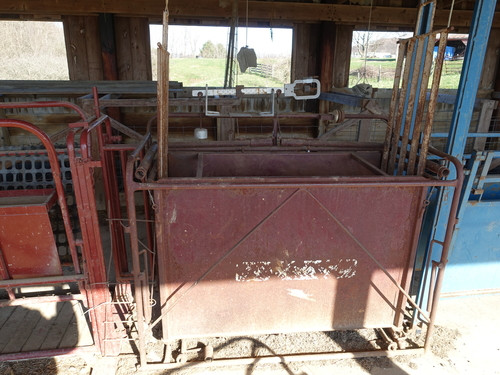
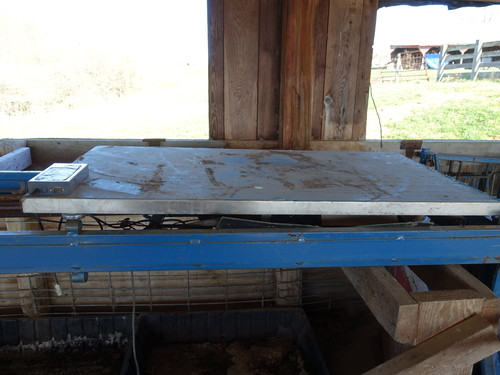
Scales play an essential role in life on the farm, informing the eye as to when animals are ready to be processed. Weights are important, because if an animal is harvested too soon, not enough fat resides in the meat, so it doesn't cook right, which results in a dissatisfied customer. An animal being too heavy is less of an issue in direct marketing, except for the extra carrying cost. The weights of sheep are hard to "eyeball", for some reason, so a scale is invaluable.
We started out weighing sheep with the electronic scale. That proved to be increasingly aggravating, as it would periodically break down, forcing us to defer to the unreliable eye. We would try to fix this critical tool, by studying directions, which had been translated from Chinese into English, and made little, if any, sense, no matter how many times reread. So, we would then call the manufacturer's representative, and be sent to a call center to speak to an engineer with a thick accent, who would ask us to go to the scale to reset commands and push buttons, per his instructions. The problem was the scale was in the sheep-shed and our cell phones didn't work out there or anywhere on the farm. Amid mounting frustration, we finally concluded this costly, high-technology scale was the wrong tool for our need.
So, we sourced a tried-n-true mechanical scale freshly built in 1950, as depicted above. We "balanced" it with a 50-lb bag of salt, and it has not skipped a beat since arriving. We have never had to read directions, call a stranger for instruction, or use the grid to supply power. Gates in front and behind hold the animal in place, and are counter-balanced by cement blocks hanging in the air. Archimedes would approve. Why is "simple" so hard to achieve?!
We strive for live weights of: 90 lbs. for lambs, 300 lbs. for hogs, and 1,000 lbs. for beeves.
Until a year ago, we harbored an unused "scale-house" on the farm, once employed for weighing groups of hogs, as depicted on the left below. It was nearly 100 years old, and was underlain with massive carved sandstones, on which beams of wood were laid to support the scale. We tore it down when renovating and expanding the adjoining apartment.

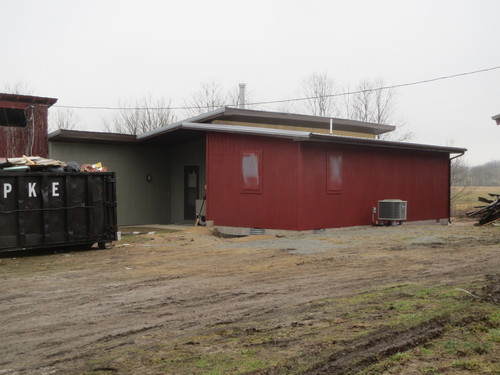
In the legal world, Susan wrestles with unpredictable "scales of justice". Those on the farm are far less complicated, fortunately.
Last, the scale in the bathroom of the house can be quite complicated. Over the past winter we had some problems with ours reporting "heavy". I repeatedly asked Susan to call the engineer to see how to reset the darn thing. She finally and kindly explained she had talked to the man, and he diagnosed the problem with our scale being irresistible homemade chocolate chip cookies. The nerve of him to presume that semi-sweet Ghiradelli chocolate chips mixed with walnuts, organic flour, and bourbon vanilla could have such a long finger. It goes to show, yet again, that an engineer in far off lands can't possibly understand what is happening on the farm and in the home. Well, maybe he can somewhat..., perhaps a little..., okay he was right, it was the cookies.
So, that is the problem and virtue with scales - they tell the truth.
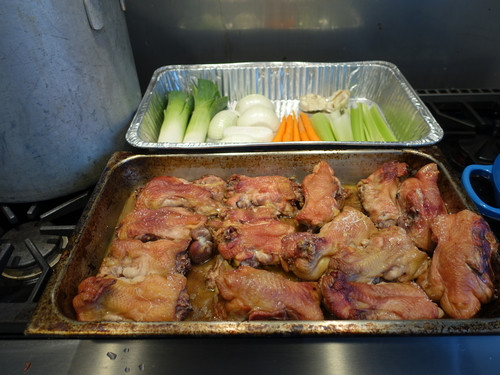
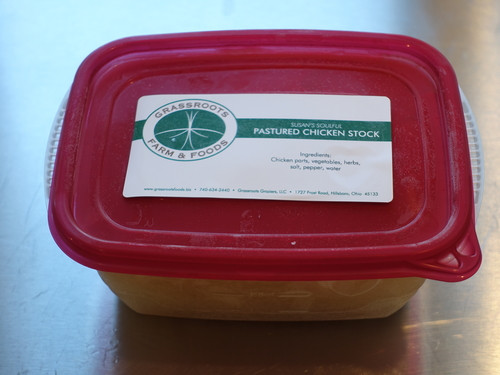
Now that we are cutting up whole chickens, we have backs with which to make chicken stock. So, we have begun doing so, and will have it available for you this weekend.
We are also coming to closure on Tar-Heel Pulled Pork and Rio-Grande Barbacoa, which will be available by opening of the summer market, at the latest.
The meal below consisted of: pan-fried trout, complemented with Woodlot Bacon, spinach and raisins poached in white wine, braised endives, and pan-fried potatoes - another unusually soulful meal out of Susan's kitchen.
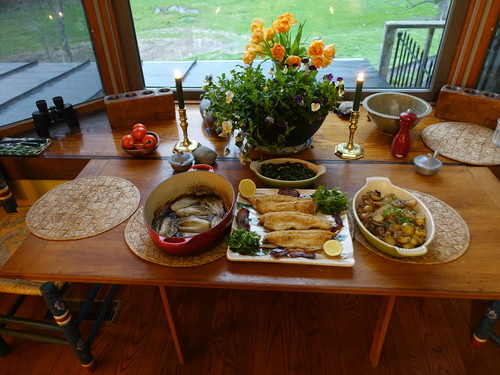
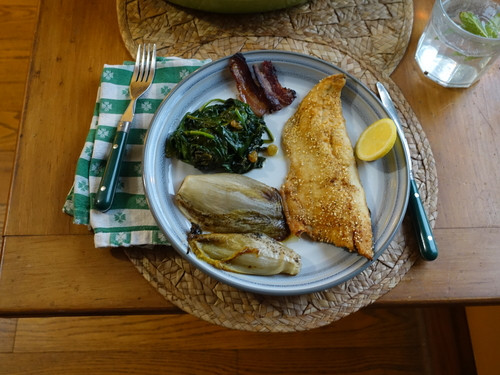
We reside in humility before scales that tell the tale.




